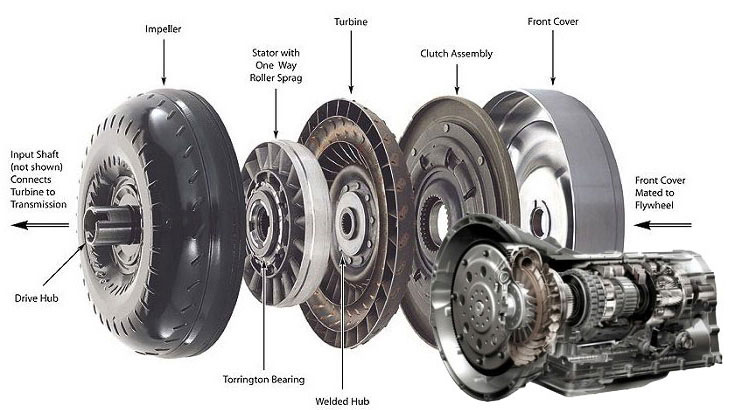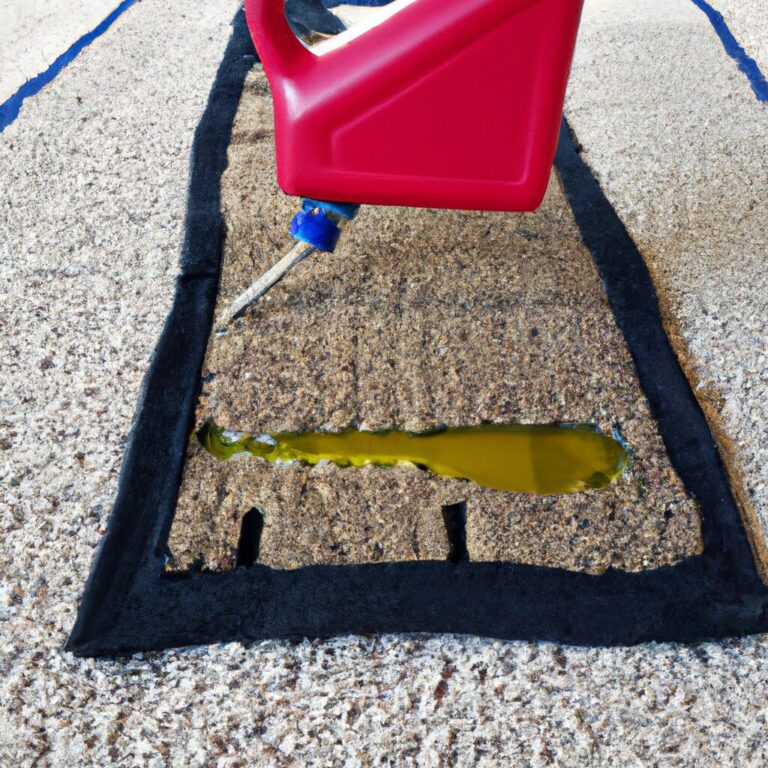How to Know If Transmission is Slipping
To determine if a transmission is slipping, observe delayed shifts or rpm spikes without acceleration. Are you experiencing issues with your vehicle’s transmission?
Identifying potential problems early can save you time and money on repairs. Transmission slipping is a common issue that can indicate a more significant problem. By recognizing the signs of slipping transmission early on, you can prevent further damage and ensure your vehicle’s longevity.
In this guide, we will discuss the common symptoms of a slipping transmission, what causes it, and steps you can take to address the issue promptly. Read on to learn more about this essential aspect of your vehicle’s functionality.

Credit: aamcoutah.com
Signs Of A Slipping Transmission
A slipping transmission can be a major headache for any car owner. Not only does it affect the vehicle’s performance, but it can also lead to costly repairs if not addressed promptly. Being able to recognize the signs of a slipping transmission is crucial in preventing further damage and avoiding potential safety hazards.
Changes In Engine Rpm
One of the clear signs of a slipping transmission is noticeable changes in engine RPM without a corresponding increase in speed. When the transmission is slipping, the engine may rev higher than usual when accelerating, indicating that the gears are not engaging properly.
Delayed Or Erratic Shifting
A delayed or erratic shifting pattern is another indication of a slipping transmission. You may experience a noticeable delay in the transmission’s response when shifting gears, or the gear changes may feel rough and jarring, which can be a cause for concern.
Burning Smell
A burning smell coming from the engine or the transmission fluid could be a sign of overheating due to the transmission slipping. The odor is a result of the transmission fluid being burned as a result of increased friction caused by the slipping gears.
Fluid Leaks
Fluid leaks underneath the vehicle, particularly in the area of the transmission, can point to a slipping transmission. Leaking transmission fluid could be an indication of worn-out seals or gaskets, which can lead to the transmission slipping out of gear.

Credit: aamcoutah.com
Causes Of Transmission Slipping
Transmission slipping can be caused by various factors such as low fluid levels, worn clutch plates, or malfunctioning solenoids. Recognizing signs like delayed shifting or RPM fluctuations can indicate that your transmission is slipping, requiring immediate attention and potential repairs.
Low fluid level is a common cause of transmission slipping.Low Fluid Level
Regularly check your transmission fluid level to prevent slipping.Worn Clutch Or Bands
Worn clutch or bands can lead to transmission slipping issues.Faulty Solenoids
Faulty solenoids can disrupt the smooth operation of your transmission.Sediment Or Contaminants In The Fluid
Contaminants in the fluid can cause friction and result in slipping. Ensure to address these causes promptly to avoid further damage.Diagnosing A Slipping Transmission
Check Transmission Fluid
Begin by checking transmission fluid level and color to assess potential issues.
Observe Shifting Behavior
Note any delayed or rough shifts while driving your vehicle.
Perform A Road Test
Take your car on a test drive to assess performance on the road.
Seek Professional Help
If you suspect a slipping transmission, consult a qualified mechanic promptly.
Preventing Transmission Slipping
When it comes to preventing transmission slipping, there are several key steps you can take to maintain the health of your vehicle’s transmission. By prioritizing regular maintenance, ensuring proper fluid levels, promoting smooth shifting, and addressing issues promptly, you can significantly reduce the risk of transmission slipping and extend the life of your vehicle.
Regular Maintenance
Regular maintenance is essential in keeping your transmission in optimal condition. This includes scheduling regular inspections and maintenance checks with a qualified mechanic. Regular servicing can identify any potential issues before they develop into major problems.
Proper Fluid Levels
Ensuring that your vehicle’s transmission fluid is at the appropriate level and in good condition is crucial in preventing slipping. Regularly check the transmission fluid using the dipstick and top it up or change it as necessary. Depending on the manufacturer’s recommendations, the transmission fluid should be changed at regular intervals.
Smooth Shifting
Promoting smooth shifting can help reduce wear and tear on the transmission. Avoid abrupt gear changes and ensure that the gears engage smoothly. Maintaining a consistent driving style and avoiding aggressive maneuvers can contribute to the overall health of your transmission.
Addressing Issues Promptly
Lastly, addressing any issues that arise with your vehicle’s transmission immediately can prevent minor problems from escalating. If you notice any unusual noises, slipping, or difficulty in shifting, seek the assistance of a professional mechanic promptly to diagnose and resolve the issue.
Repairing A Slipping Transmission
A slipping transmission can be a frustrating and potentially costly problem to deal with. It can cause your vehicle to lose power, have difficulty shifting gears, and even lead to complete transmission failure if left unaddressed. However, the good news is that in many cases, a slipping transmission can be repaired without the need for a complete replacement. In this section, we will discuss some of the most common and effective methods for repairing a slipping transmission, including fluid and filter change, transmission flush, clutch replacement, solenoid replacement, and overhaul or rebuild. Let’s dive in!
Fluid And Filter Change
One of the first steps to take when repairing a slipping transmission is to perform a fluid and filter change. Over time, the transmission fluid can become contaminated with debris, causing it to lose its lubricating properties and resulting in slipping gears. By draining the old fluid and replacing it with fresh, clean fluid, you can help restore proper functionality to the transmission. Additionally, replacing the transmission filter can help prevent future contamination and prolong the life of the transmission.
Transmission Flush
A transmission flush is another method that can be used to address a slipping transmission. This process involves flushing out the old fluid and replacing it with new fluid using specialized equipment. A transmission flush can help remove any debris or contaminants that may be causing the slipping. It is important to note that not all transmissions are compatible with a flush, so it is best to consult with a professional before proceeding with this method.
Clutch Replacement
If the slipping is occurring during manual shifting, the problem may lie with the clutch. In this case, replacing the clutch can often resolve the issue. A worn or faulty clutch can cause the transmission to slip, as it fails to engage properly with the engine. By replacing the clutch, you can restore the necessary friction and ensure smooth gear changes.
Solenoid Replacement
Transmission solenoids are responsible for controlling the flow of transmission fluid and shifting gears. If a solenoid becomes damaged or malfunctioning, it can cause the transmission to slip. In such cases, replacing the faulty solenoid can often solve the problem. Consult with a professional mechanic to identify the specific solenoid causing issues and to ensure proper replacement.
Overhaul Or Rebuild
In more severe cases, where the slipping is due to extensive internal damage or wear, an overhaul or rebuild may be necessary. This involves disassembling the transmission and replacing worn or damaged components. While this is a more labor-intensive and costly option, it can effectively address the issue and extend the life of the transmission. It is best to consult with a knowledgeable mechanic to determine if an overhaul or rebuild is the best course of action for your specific situation.

Credit: www.lakeworthtransmissionrepair.com
Frequently Asked Questions On How To Know If Transmission Is Slipping
What Does A Transmission Slipping Feel Like?
Transmission slipping feels like a delay in power when accelerating, or a sudden RPM increase with no increase in speed. It can also cause the vehicle to shake or jerk during gear changes. This issue indicates a problem with the transmission’s ability to engage properly, requiring immediate attention.
How Do You Test If Your Transmission Is Slipping?
To test for transmission slipping, accelerate quickly and observe for delayed or erratic gear shifts. Also, check for an unexplained increase in engine RPM without a corresponding increase in vehicle speed. If you notice these signs, have a professional inspect your transmission immediately.
Can A Slipping Transmission Be Fixed?
Yes, a slipping transmission can be fixed by diagnosing and repairing the underlying issues causing the problem. Regular maintenance can prevent this issue.
What Does A Transmission Slipping Sound Like?
A transmission slipping sounds like a whining or humming noise as the gears fail to engage properly. It can also manifest as a delay in acceleration and a noticeable drop in RPMs. Keep an eye out for any burning odor or fluid leaks as well.
Regular maintenance can prevent this issue.
What Are The Signs Of A Slipping Transmission?
Signs of a slipping transmission include delayed or erratic shifting, RPM fluctuations, and burnt smell.
Can A Low Transmission Fluid Cause Slipping?
Yes, a low transmission fluid level can cause the transmission to slip, as it hinders proper lubrication.
How Much Does It Cost To Fix A Slipping Transmission?
The cost to fix a slipping transmission can range from $1,500 to $4,000, depending on the extent of the damage and the type of vehicle.
Conclusion
Recognizing the signs of a slipping transmission is vital for maintaining the health of your vehicle. By being attentive to unusual sounds, smells, and performance, you can address the issue promptly, ultimately saving you time and money on costly repairs.
It’s essential to seek professional assistance if you suspect any transmission problems to ensure the longevity of your vehicle.

